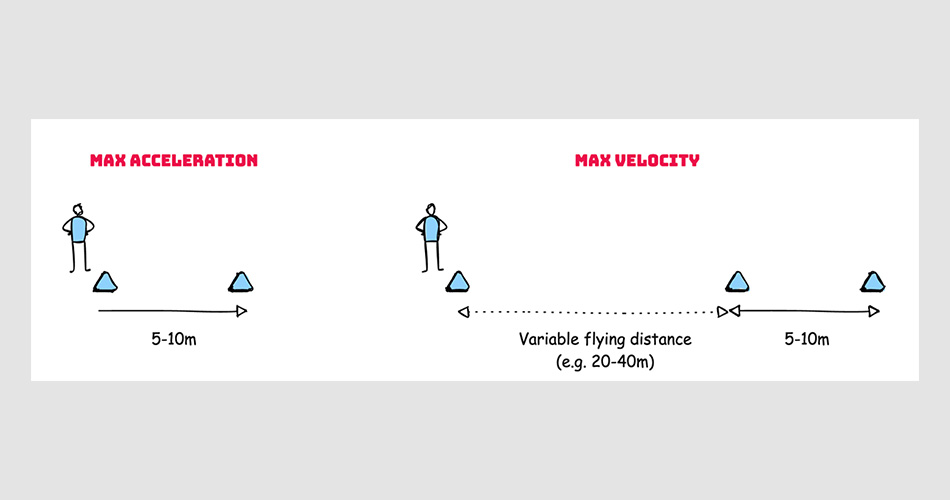Examining the Accuracy of Acceleration-Velocity Profiles Using Local Positioning Systems
In sports science, understanding and tracking an athlete’s sprint performance is essential for improving training regimens, monitoring progress, and preventing injury. Traditional methods of assessing sprint performance, such as laser gun devices, provide highly accurate data but can be impractical in a dynamic sports environment. Our recent study explores an innovative alternative by evaluating the agreement and sensitivity of acceleration-velocity profiles (AVPs) derived via Local Positioning Systems (LPS).
Objective
The primary goal of our research was to assess the reliability of LPS-derived metrics, particularly when compared to the more established laser gun method. Specifically, we aimed to evaluate the accuracy of key performance indicators like Maximum Sprinting Speed (MSS), Maximum Acceleration (MAC), and Relative Acceleration (TAU) using both the traditional time-velocity method and the newer velocity-acceleration method.
Methodology
We recruited 31 elite youth basketball players (23 male, 8 female) for our study. Each athlete completed two maximal effort 30-meter sprint trials. These trials were simultaneously measured using both a high-precision laser gun and an LPS device (Kinexon). The laser gun provided a reference standard for sprint metrics, while the LPS allowed us to explore the viability of continuous monitoring in situ.
Two different approaches were used to model sprint mechanics:
- Time-Velocity Method: This traditional method involved analyzing the time-velocity data collected over each sprint and deriving MSS, MAC, and TAU by fitting a mono-exponential model.
- Velocity-Acceleration Method: This newer approach used LPS-derived velocity and acceleration data, allowing for real-time estimates of AVP parameters based on the athlete’s in situ performance.
Results
Our findings demonstrated a high level of agreement between the laser gun and LPS measurements, particularly for MSS. The percentage difference (%Bias) between the LPS and laser gun estimates for MSS was within the practically significant threshold of ±5%, suggesting that LPS provides valid estimates for maximum sprinting speed. However, MAC and TAU showed larger discrepancies, with %Bias exceeding the 5% threshold in some cases, particularly with the velocity-acceleration method.
When evaluating the sensitivity of LPS-derived metrics to changes in athlete performance, we found that MSS estimates from the LPS showed satisfactory sensitivity, with minimal detectable change (%MDC95) falling within acceptable ranges. Unfortunately, both MAC and TAU exhibited less reliable sensitivity, with values indicating that substantial changes in performance would be required before the LPS could reliably detect a true change in these metrics.
Discussion
The results of this study suggest that while LPS can be a valid and practical tool for assessing sprint mechanics in real-time, its accuracy is limited when it comes to measuring acceleration-related metrics like MAC and TAU. The MSS estimates provided by LPS are sufficiently reliable for use in both training and competition environments, offering sports scientists and coaches a more efficient and less invasive method of performance monitoring. However, further refinement of LPS technology and sampling rates may be necessary to improve its sensitivity in detecting acceleration-based performance changes.
Conclusion
This study contributes to the growing body of research exploring the use of LPS in sports performance analysis. Our findings support the use of LPS for monitoring MSS in team sports, providing a practical and time-efficient alternative to traditional laser gun methods. However, caution is advised when using LPS to assess maximal acceleration characteristics, as the current technology may not provide the level of sensitivity needed for detailed acceleration profiling.
Further research is needed to explore ways to enhance the accuracy of acceleration metrics in LPS systems, possibly by increasing the sampling frequency or combining LPS with other forms of motion tracking technology.
Link to the PDF: https://www.mdpi.com/1424-8220/24/19/6192/pdf
Link to the Website: https://www.mdpi.com/1424-8220/24/19/6192
Link to Reproducible Data and Code: https://osf.io/sk2pa/











Responses